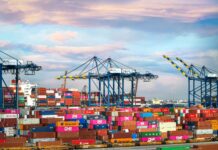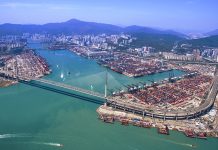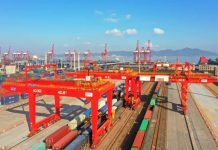
Porto Itapoá has completed the first phase of its RTG-Optimization project, a multi-stage rollout designed to improve yard crane operations at the Brazilian container terminal.
The terminal, one of South America’s busiest, is working with supply chain software provider Kaleris to enhance efficiency and automate yard processes through its N4 terminal operating system.
COO Sergni Pessoa Rosa Jr. said the move reflects the port’s broader digitalization drive. “Implementing RTG-O is a key step in our journey to automate yard operations and deliver more value to customers,” he said.
The project began in March 2025 with the RTG Sequencer module. Porto Itapoá first tested the tool on a single RTG lane before expanding it to additional lanes. By June, the solution was in use across all 24/7 RTG lanes after proving strong results in early trials.
Additionally, IT Manager Sandro Luiz Martins said the phased rollout minimized disruption while allowing the team to validate each stage. “We saw measurable improvements in crane productivity and yard flow, which gave us confidence to expand,” he explained.
Moreover, the next phase, scheduled for September, will bring in the Yard Crane Balancer and Predictive Rehandles modules. Planning and Gate Coordinator Felipe Maldonado e Silva noted that despite challenges such as time zones and infrastructure, the Kaleris team had been “highly collaborative and professional.”
To support the rollout, Porto Itapoá has launched daily tests and a structured training program for staff. Facilitators are providing close support to ensure smooth adoption and real-time adjustments.
The project marks a significant milestone in Porto Itapoá’s innovation strategy. The port says the initiative will set new benchmarks for automation and efficiency across South American terminal operations.





